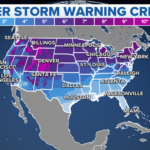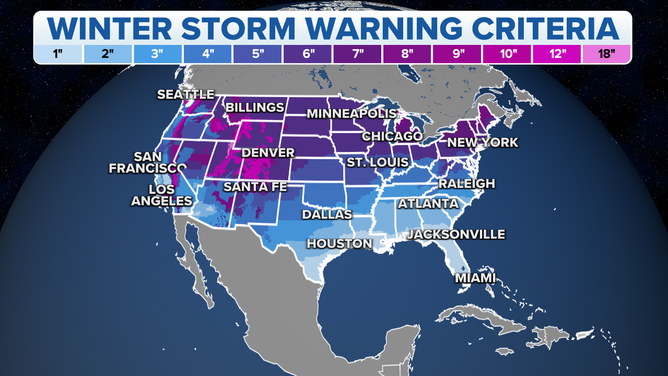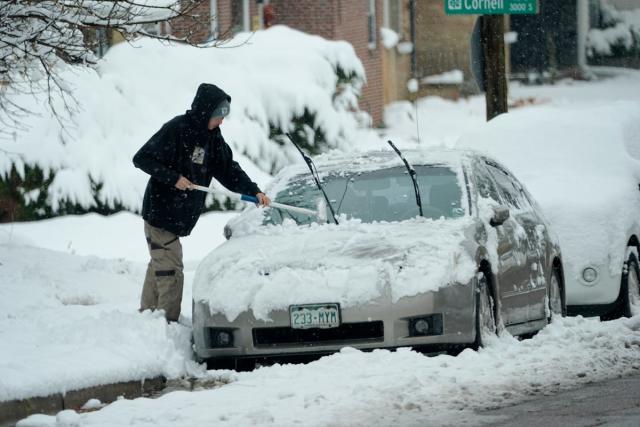When winter hits, it brings with it a variety of weather conditions, but one of the most dangerous and unpredictable events is a winter storm. The term “winter storm warning” is something that should not be taken lightly. These warnings are issued when severe winter weather, such as heavy snow, sleet, freezing rain, or a combination of these, is expected to cause hazardous conditions. But what exactly does a winter storm warning mean, and how can you prepare for one? Here’s everything you need to know.
What is a Winter Storm Warning?
A winter storm warning is an official alert issued by meteorologists when a significant winter storm is expected to affect a specific area. The warning indicates that hazardous weather conditions are imminent and that people should take appropriate precautions. These warnings are typically issued by the National Weather Service (NWS) in the United States or equivalent agencies in other countries, depending on the region.
Winter storms can involve several types of severe weather, such as:
- Heavy snowfall: Large amounts of snow that can accumulate quickly, making roads impassable and creating dangerous driving conditions.
- Freezing rain: Rain that falls as liquid but freezes upon contact with surfaces, creating slick and icy conditions on roads, trees, and power lines.
- Sleet: Small, ice pellets that make driving and walking extremely hazardous.
- Blizzards: A combination of strong winds and heavy snow, reducing visibility and creating life-threatening conditions.
How is a Winter Storm Warning Different from Other Weather Alerts?
There are several weather alerts issued by meteorological agencies, and understanding the differences is crucial for your safety:
- Winter Storm Watch: This alert is issued when conditions are favorable for a winter storm, but the exact timing or severity is still uncertain. It’s a heads-up to start preparing.
- Winter Storm Warning: A warning is more urgent. It indicates that a winter storm is imminent or occurring, and significant disruptions are expected.
- Blizzard Warning: Issued when snow combined with high winds creates low visibility and dangerous travel conditions. This is a more severe version of a winter storm.
- Ice Storm Warning: Specifically issued when ice accumulation from freezing rain is expected to cause power outages, dangerous roads, and falling tree limbs.
How to Prepare for a Winter Storm Warning
If a winter storm warning has been issued for your area, you need to take immediate steps to ensure your safety and minimize disruption. Here are some essential preparation tips:
- Stay Informed: Keep a close eye on weather reports, especially as the storm approaches. Use reliable sources such as the National Weather Service or local news channels.
- Stock Up on Essentials: Make sure you have enough food, water, and medicine for several days in case of power outages or difficulty traveling. It’s also a good idea to keep a flashlight, batteries, and blankets handy.
- Winterize Your Home: Insulate pipes to prevent freezing, seal windows and doors to keep the cold out, and ensure that your heating system is in good working order. Have extra warm clothing, including gloves, hats, and scarves.
- Avoid Travel: If possible, stay off the roads during a winter storm. If you absolutely need to travel, ensure your vehicle is winter-ready with snow tires, windshield washer fluid, a full gas tank, and an emergency kit that includes blankets, food, and water.
- Prepare for Power Outages: If the storm brings heavy snow or freezing rain, power outages are common due to downed trees or power lines. Have a battery-powered radio to stay updated on the storm, and keep your mobile phone charged.
- Check on Vulnerable Neighbors: Elderly or disabled individuals may need extra assistance during a storm. Check in on them to ensure they have everything they need.
What to Do During a Winter Storm Warning
Once a winter storm warning is in effect, it’s important to take the following steps to stay safe:
- Stay Indoors: Avoid going outside unless absolutely necessary. Strong winds and heavy snow can quickly make conditions life-threatening.
- Keep Warm: If the power goes out, dress in layers and keep your living space as warm as possible. Use blankets and avoid opening doors unnecessarily to conserve heat.
- Limit Use of Electrical Appliances: If you experience power loss, unplug electrical devices to prevent damage from power surges when electricity is restored.
- Monitor Emergency Alerts: Continue to stay updated through weather apps or local radio stations.
What to Do After the Storm Passes
Once the storm has subsided, conditions may still be hazardous, so proceed with caution:
- Check for Ice and Snow: Roads and sidewalks may still be icy, and fallen snow may make walking or driving treacherous. Avoid unnecessary travel until authorities declare it safe.
- Shovel Safely: When clearing snow from driveways or walkways, take breaks and avoid overexertion. Use proper techniques to prevent back injury.
- Be Aware of Falling Trees and Debris: Frozen trees and branches may still be dangerous after the storm, so stay clear of them until it is safe to remove any debris.
Conclusion
A winter storm warning is a serious alert that should never be ignored. Being prepared and staying informed can make all the difference in keeping you and your loved ones safe during severe winter weather. By following safety tips, making necessary preparations, and remaining cautious, you can minimize the risks associated with these storms and stay safe until conditions improve.










